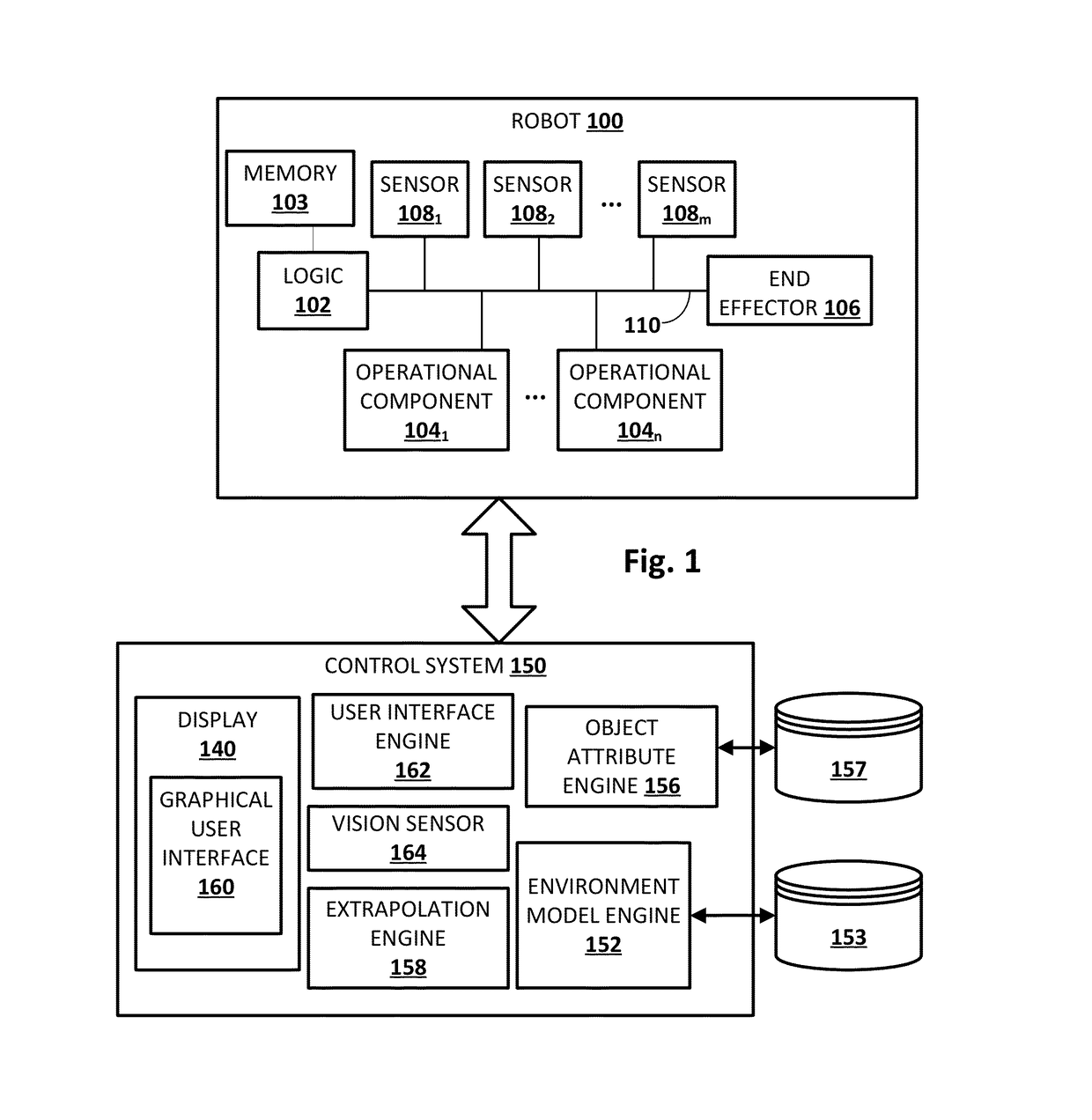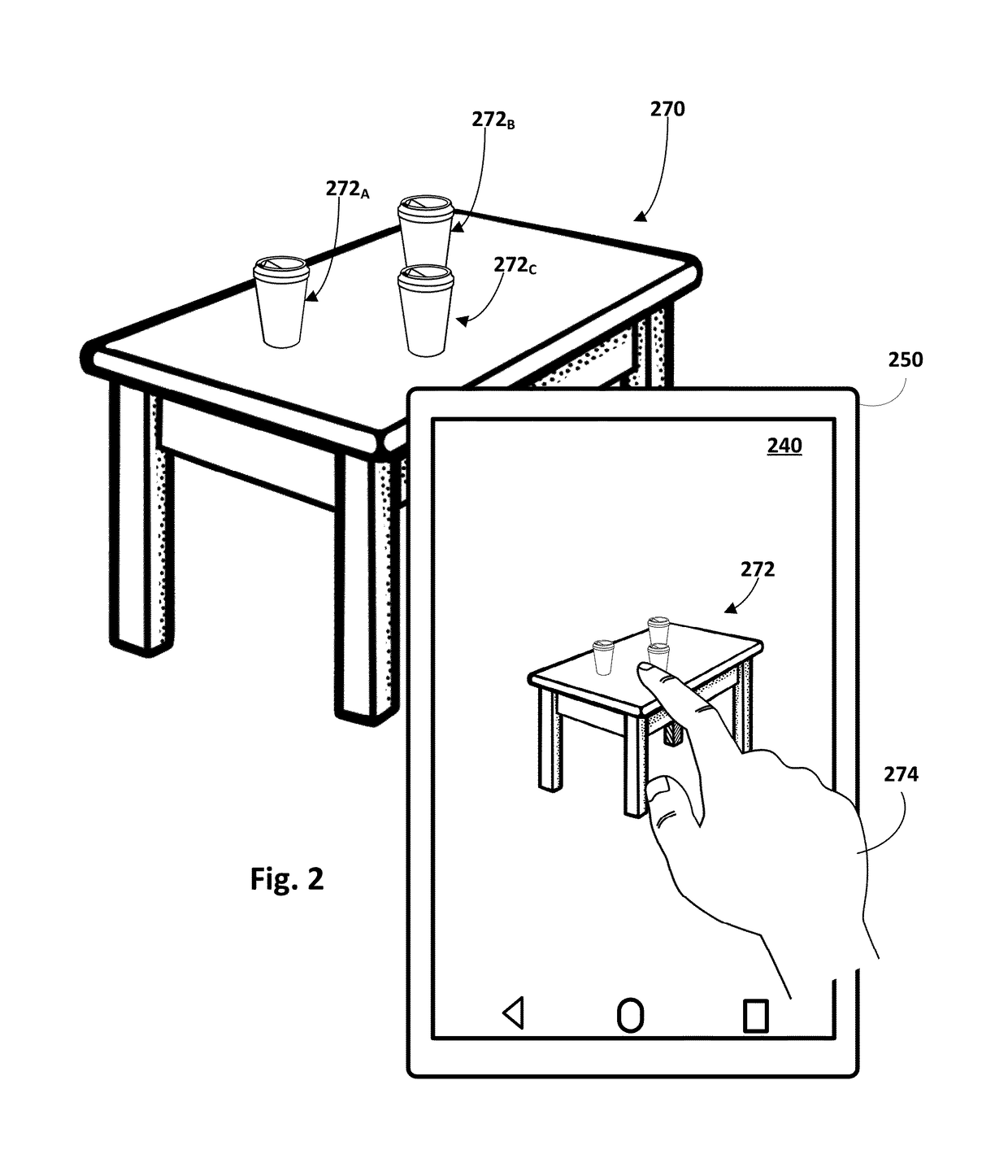Space extrapolation for robot task performance
a robot and task technology, applied in the field of space extrapolation for robot task performance, can solve the problems of less well-suited general-purpose robot control in less predictable environments, inefficient and frustrating for operators, and achieve the effect of a higher level of abstraction in robot control
- Summary
- Abstract
- Description
- Claims
- Application Information
AI Technical Summary
Benefits of technology
Problems solved by technology
Method used
Image
Examples
Embodiment Construction
[0020]FIG. 1 is a schematic diagram of an example environment in which selected aspects of the present disclosure may be practiced in accordance with various implementations. A robot 100 may be in communication with a control system 150. Robot 100 may take various forms, including but not limited to a telepresence robot (e.g., which may be as simple as a wheeled vehicle equipped with a display and a camera), a robot arm, a humanoid, an animal, an insect, an aquatic creature, a wheeled device, a submersible vehicle, an unmanned aerial vehicle (“UAV”), and so forth. In various implementations, robot 100 may include logic 102. Logic 102 may take various forms, such as a real time controller, one or more processors, one or more field-programmable gate arrays (“FPGA”), one or more application-specific integrated circuits (“ASIC”), and so forth. In some implementations, logic 102 may be operably coupled with memory 103. Memory 103 may take various forms, such as random access memory (“RAM...
PUM
 Login to View More
Login to View More Abstract
Description
Claims
Application Information
 Login to View More
Login to View More - R&D
- Intellectual Property
- Life Sciences
- Materials
- Tech Scout
- Unparalleled Data Quality
- Higher Quality Content
- 60% Fewer Hallucinations
Browse by: Latest US Patents, China's latest patents, Technical Efficacy Thesaurus, Application Domain, Technology Topic, Popular Technical Reports.
© 2025 PatSnap. All rights reserved.Legal|Privacy policy|Modern Slavery Act Transparency Statement|Sitemap|About US| Contact US: help@patsnap.com



